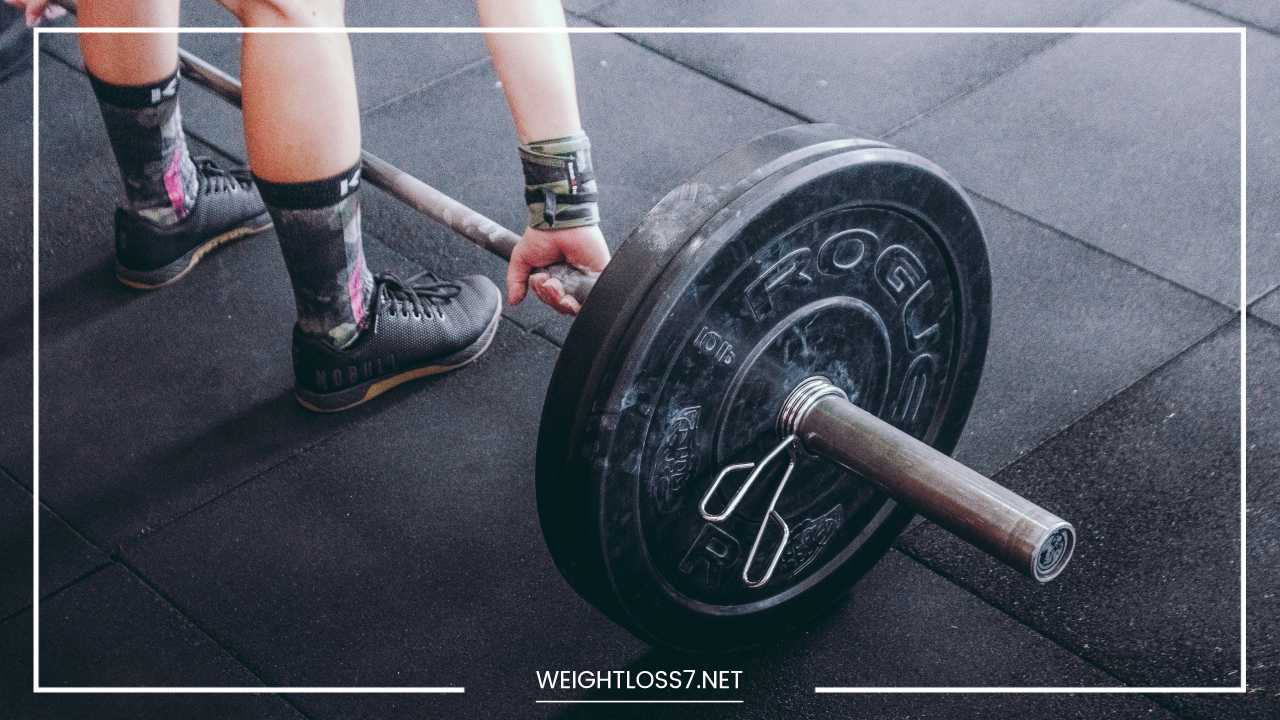Reverse Pyramid Training: Build Strength and Muscle

Reverse Pyramid Training
Reverse Pyramid Training: A Guide to Unlocking Your Strength Potential
Have you hit a plateau in your weightlifting journey? Are your muscles yearning for a new challenge to ignite growth? If so, then reverse pyramid training (RPT) might be the answer you’ve been looking for.
This unique training style flips the script on traditional weightlifting methods, offering a strategic approach to maximizing strength and muscle gains.
What is Reverse Pyramid Training?
Unlike the conventional method of progressively increasing weight with lower repetitions, RPT takes the opposite approach.
It starts with the heaviest weight you can lift for a specific number of reps (typically 4-6) and gradually decreases the weight for subsequent sets while increasing the repetitions.
This creates a “pyramid” effect, where the workload is heaviest at the beginning and tapers down throughout the exercise.
Benefits of Reverse Pyramid Training
RPT offers a multitude of benefits for weightlifters of all levels:
- Strength Gains: By lifting the heaviest weight possible at the outset, RPT challenges your central nervous system and stimulates muscle fibers to adapt and grow stronger.
- Improved Muscle Recruitment: The heavier weights used in the initial sets activate a greater number of muscle fibers, leading to more comprehensive muscle development.
- Increased Muscular Endurance: As you progress through the lighter weight sets with higher reps, you fatigue your muscles in a different way, enhancing muscular endurance.
- Reduced Risk of Injury: By starting heavy with proper form, you can ensure proper technique throughout the exercise before moving to lighter weights, minimizing the risk of injury.
- Mental Toughness: The challenging nature of RPT, particularly the initial heavy sets, builds mental fortitude and teaches you to push past your perceived limitations.
Who Can Benefit from Reverse Pyramid Training?
RPT is a versatile training method that can be effective for a variety of lifters:
- Intermediate Lifters: Those who have plateaued with traditional training methods can find RPT to be a stimulating way to break through plateaus and unlock new levels of strength.
- Advanced Lifters: Even seasoned athletes can benefit from RPT by incorporating it into specific exercises or training cycles to target specific weaknesses or add variety to their routines.
- Athletes: Athletes in various sports can utilize RPT to enhance their overall strength and power, improving performance in their respective disciplines.
How to Implement Reverse Pyramid Training
Here’s a breakdown of how to incorporate RPT into your workout routine:
1. Choose Your Exercises: RPT works best with compound exercises that engage multiple muscle groups, such as squats, deadlifts, bench presses, rows, and overhead presses.
2. Warm-Up Properly: A thorough warm-up is crucial before any weightlifting session, and even more so with RPT. Perform dynamic stretches, light cardio, and light sets of the exercise with progressively heavier weights to prepare your muscles for the heavier loads.
3. Set Weight and Reps: Determine your 1-rep max (1RM) for the chosen exercise. This is the heaviest weight you can lift for a single repetition. For RPT, you’ll typically start with a weight that’s 80-90% of your 1RM for the first set, aiming for 4-6 reps.
Subsequent sets can decrease in weight by 8-10% with a corresponding increase in repetitions (e.g., set 2: 75% of 1RM for 8-10 reps, set 3: 65% of 1RM for 12-15 reps).
4. Rest Periods: Allow sufficient rest periods between sets. For the heavy initial sets, aim for 2-3 minutes of rest to ensure proper recovery and maintain good form. As the weight gets lighter, you can decrease the rest period to 1-2 minutes.
5. Focus on Form: Maintaining proper form throughout the entire exercise is paramount, especially during the heavier sets. Don’t sacrifice form for heavier weight.
Sample Reverse Pyramid Training Workout
Here’s a sample RPT workout targeting major muscle groups:
- Squats:
- Set 1: 80% of 1RM x 4-6 reps
- Set 2: 70% of 1RM x 8-10 reps
- Set 3: 60% of 1RM x 12-15 reps
- Bench Press:
- Set 1: 80% of 1RM x 4-6 reps
- Set 2: 70% of 1RM x 8-10 reps
- Set 3: 60% of 1 RM x 12-15 reps
- Barbell Rows:
- Set 1: 80% of 1RM x 4-6 reps
- Set 2: 70% of 1RM x 8-10 reps
- Set 3: 60% of 1RM x 12-15 reps
- Overhead Press:
- Set 1: 80% of 1RM x 4-6 reps
- Set 2: 70% of 1RM x 8-10 reps
- Set 3: 60% of 1RM x 12-15 reps
Progression and Programming
You can progress with RPT by gradually increasing the weight you use in the first set over time. Aim for small weight increments (2.5-5 lbs) to ensure continued progress without overtraining.
As a general rule, it’s recommended to use RPT for specific exercises or training cycles for a limited period (4-6 weeks) before switching to a different training method to avoid plateaus.
Safety Considerations
While RPT offers numerous benefits, it’s crucial to prioritize safety:
- Know Your Limits: Be honest about your lifting capabilities and choose starting weights you can handle with proper form.
- Warm-Up Adequately: A thorough warm-up is essential to prepare your muscles and joints for the heavy lifting involved.
- Focus on Form: Don’t sacrifice form for heavier weight. If you struggle to maintain proper technique, reduce the weight.
- Listen to Your Body: Pay attention to your body’s signals. If you experience pain, stop the exercise and consult a healthcare professional if necessary.
- Spotter: Consider having a spotter present, especially when lifting heavy weights for the initial sets.
Variations of Reverse Pyramid Training
RPT can be adapted to fit your specific needs and goals. Here are a few variations to consider:
- Drop Sets: Instead of resting between sets, you can immediately reduce the weight by a predetermined amount (e.g., 10%) and continue performing reps until failure.
- Rest-Pause Sets: After completing a set, rest for a short period (10-20 seconds) and perform additional reps with the same weight before racking the weight.
- Supersets or Trisets: Combine RPT with complementary exercises performed back-to-back with minimal rest. This can be a great way to intensify your workout and target multiple muscle groups.
Additional Tips for Success with Reverse Pyramid Training
Here are some extra pointers to maximize your results with RPT:
- Track Your Progress: Keeping a workout log allows you to monitor your progress over time. Record the weight, reps, and rest periods for each set. This will help you track your improvements and adjust the program as needed.
- Focus on Mind-Muscle Connection: Maintain a strong mind-muscle connection throughout the exercise. Focus on the targeted muscles and feel them working with each rep.
- Nutrition: Proper nutrition is essential for muscle growth and recovery. Ensure you’re consuming enough calories and protein to support your training goals.
- Post-Workout Recovery: Prioritize proper sleep and recovery after your workout. This allows your muscles to rebuild and repair themselves, leading to better performance in future workouts.
- Consult a Coach: If you’re new to weightlifting or have any concerns, consider consulting a certified personal trainer or coach. They can help you design a safe and effective RPT program tailored to your individual needs and goals.
Who Should Avoid Reverse Pyramid Training?
While RPT can be beneficial for many, it’s not suitable for everyone. Here are some situations where it might be best to avoid RPT:
- Beginners: Those new to weightlifting should focus on mastering proper form with lighter weights before progressing to heavier loads.
- Individuals with Injuries: If you have any existing injuries, consult a doctor or physical therapist before attempting RPT to avoid further complications.
- Those Prone to Injury: If you have a history of injuries, especially those related to poor form, it might be best to choose a different training method that emphasizes controlled movements.
Incorporating RPT into Your Training Split
RPT can be integrated into various training splits. Here are a few examples:
- Push-Pull-Legs Split: Utilize RPT for the main compound exercises of each push (e.g., bench press, overhead press), pull (e.g., rows), and leg (e.g., squats) workouts.
- Upper-Lower Split: Implement RPT for the major lifts in your upper body and lower body workouts.
- Full-Body Split: If you prefer full-body workouts, choose 2-3 compound exercises to perform with RPT in each session.
The Final Word
By incorporating the principles outlined above, you can leverage reverse pyramid training to elevate your workouts and achieve remarkable strength gains. Remember, consistency, proper form, and progressive overload are key to success with RPT.
With dedication and a well-designed program, you can unlock your full strength potential and witness a significant transformation in your physique and fitness level.
Reverse pyramid training is a powerful tool that can add variety and challenge to your weightlifting routine. By strategically manipulating weight and reps, RPT can help you break through plateaus, build strength, and improve your overall fitness.
Remember to prioritize safety, listen to your body, and gradually progress as you get comfortable with this training method. With dedication and proper execution, RPT can unlock your full strength potential and take your workouts to the next level.

















